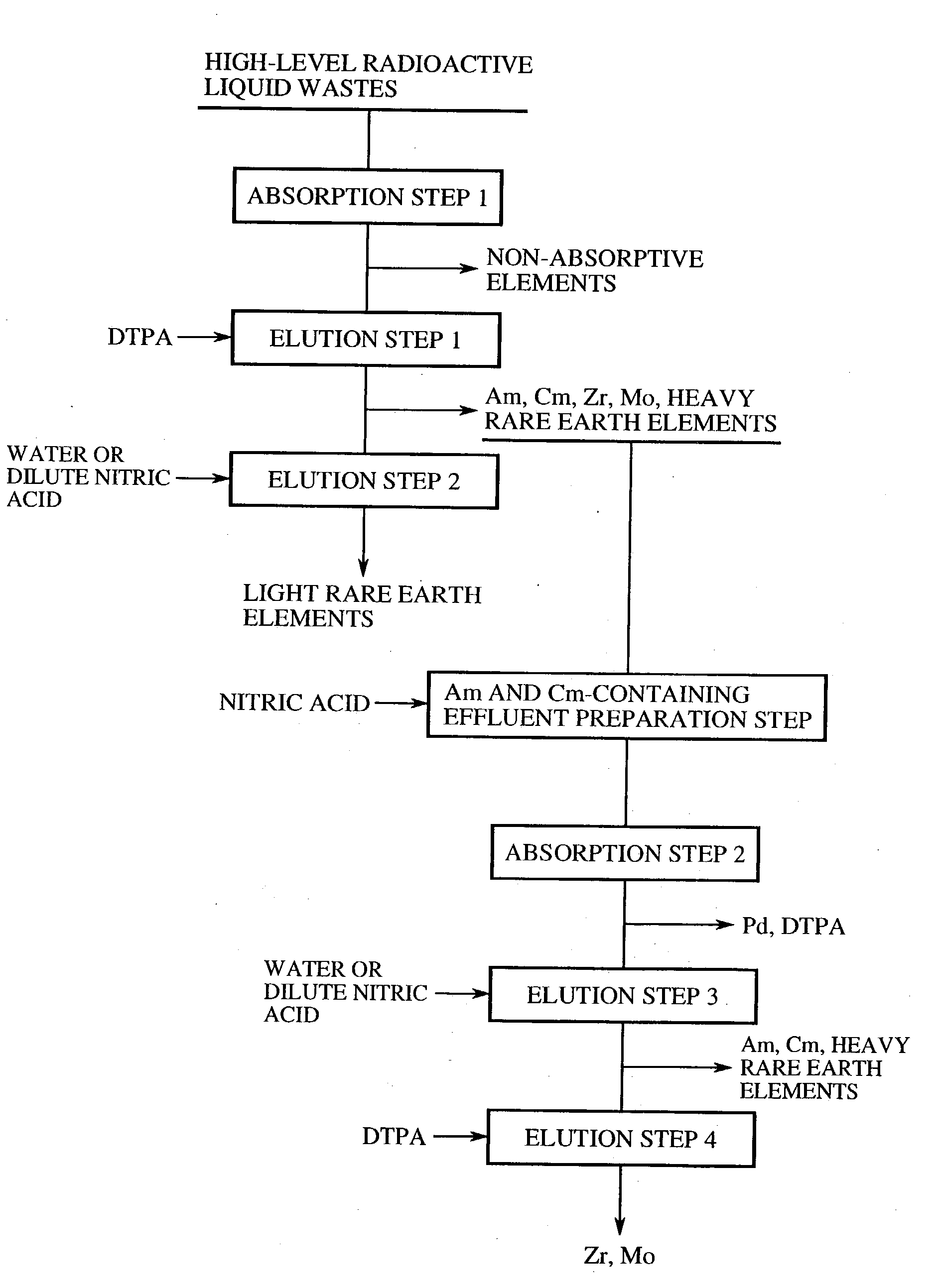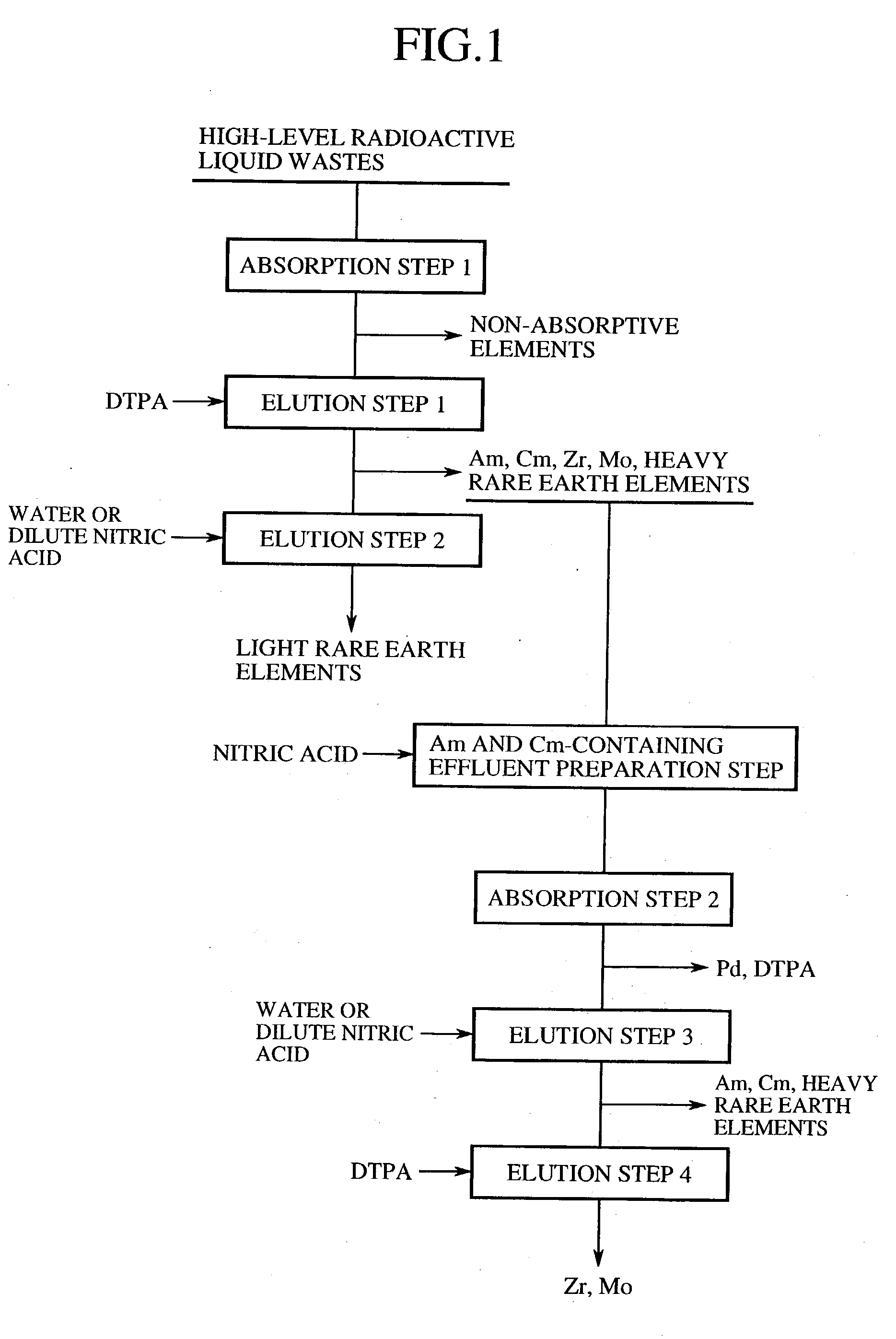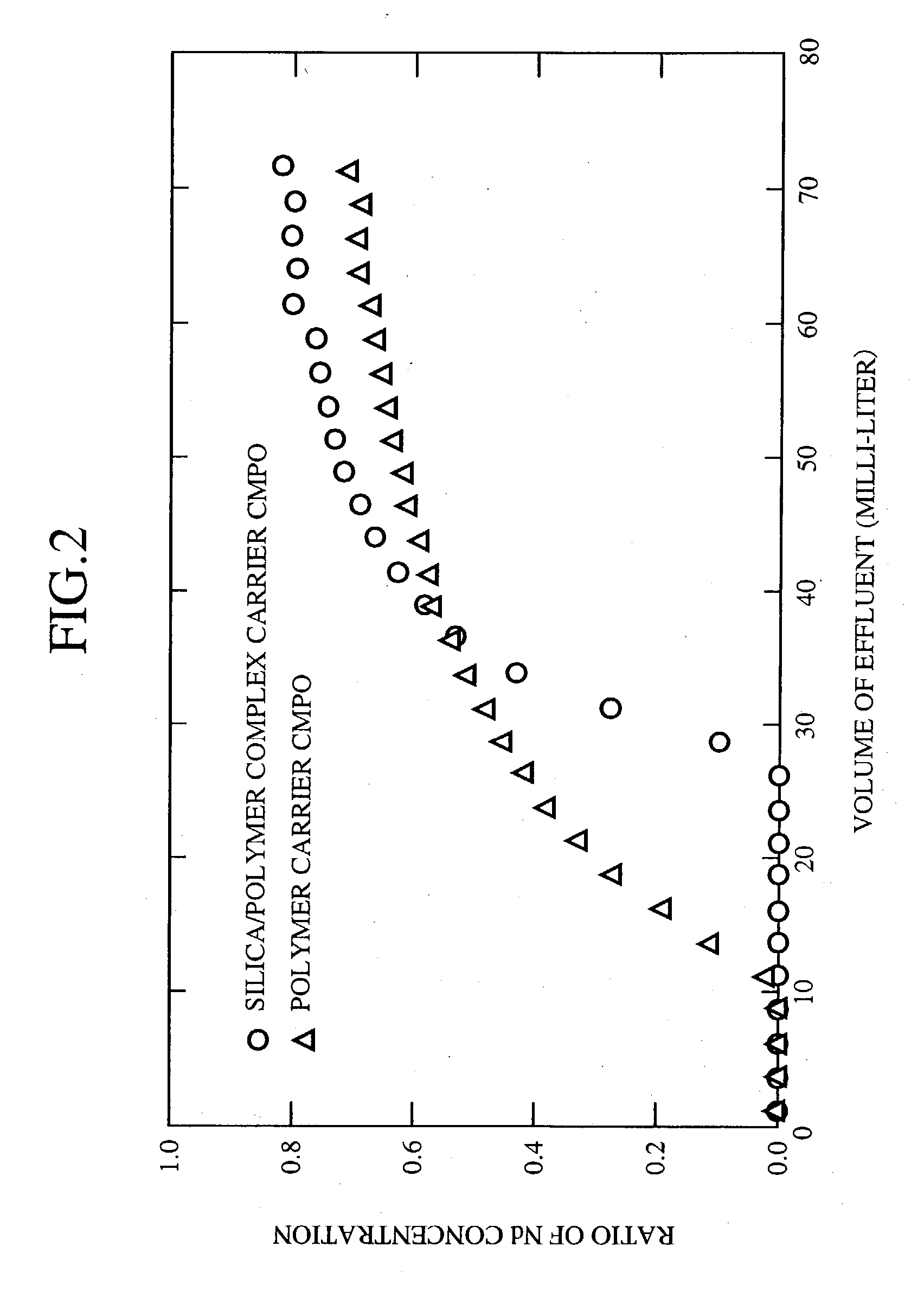Method of separation and recovery of elements from radioactive liquid wastes
a radioactive liquid waste and element technology, applied in the field of radioactive liquid waste element separation and recovery, can solve the problems of difficulty in separating one from the other, lack of effective separation and recovery methods of minor actinides such as americium, curium or the like from high-level radioactive liquid waste,
- Summary
- Abstract
- Description
- Claims
- Application Information
AI Technical Summary
Benefits of technology
Problems solved by technology
Method used
Image
Examples
embodiment 1
[0033] Embodiment 1
[0034] A general outline of a method of separation and recovery of elements from high-level radioactive liquid wastes according to the present invention will be further explained in detail at each step. FIG. 1 is a flowchart of a general outline of a method of separation and recovery of elements from high-level radioactive liquid wastes.
[0035] 1. Absorption Step 1 (First Absorption Step)
[0036] High-level radioactive liquid wastes, which are produced from spent nuclear fuel reprocessing and nuclear substance producing and dissolving steps in nuclear power facilities, are nitric acid solutions containing approximately 1 mole per liter to 6 mole per liter of nitric acids in most instances. It is possible to use just the nitric acid solutions as the processing solution, and to use the nitric acid solutions subjected to a concentration process such as vaporization in some cases.
[0037] Moreover, the high-level radioactive liquid wastes may be hydrochloric acid, sulfuric...
example 1
[0060] The example 1 is one example of a test to separate and recover elements from a process liquid simulating the high-level radioactive liquid wastes produced in the spent nuclear fuel reprocessing. Hereafter, the test will be explained in accordance with procedures thereof.
[0061] (1) Process Liquid Preparation Step 1
[0062] Each nitrate of Strontium (Sr), Lanthanum (La), Cerium (Ce), Neodymium (Nd), Samarium (Sm), Europium (Eu), Gadolinium (Gd), Yttrium (Y), Zirconium (Zr), Palladium (Pm) and Ruthenium (Ru), or ammonium salt of molybdic acid was picked up as typical elements contained in the high-level radioactive liquid wastes. The each salt was dissolved in 3mole / liter of nitric acid solution in accordance with the composition in Table 1 to obtain a process liquid (high-level radioactive liquid wastes-simulating solution) used for the test of separating and recovering the elements.
1TABLE 1 COMPOSITION OF PROCESS LIQUID FOR SEPARATION AND RECOVERY TEST (HIGH-LEVEL RADIOACTIVE LI...
PUM
| Property | Measurement | Unit |
|---|---|---|
| Dissociation constant | aaaaa | aaaaa |
| Dissociation constant | aaaaa | aaaaa |
Abstract
Description
Claims
Application Information
 Login to View More
Login to View More - R&D
- Intellectual Property
- Life Sciences
- Materials
- Tech Scout
- Unparalleled Data Quality
- Higher Quality Content
- 60% Fewer Hallucinations
Browse by: Latest US Patents, China's latest patents, Technical Efficacy Thesaurus, Application Domain, Technology Topic, Popular Technical Reports.
© 2025 PatSnap. All rights reserved.Legal|Privacy policy|Modern Slavery Act Transparency Statement|Sitemap|About US| Contact US: help@patsnap.com



